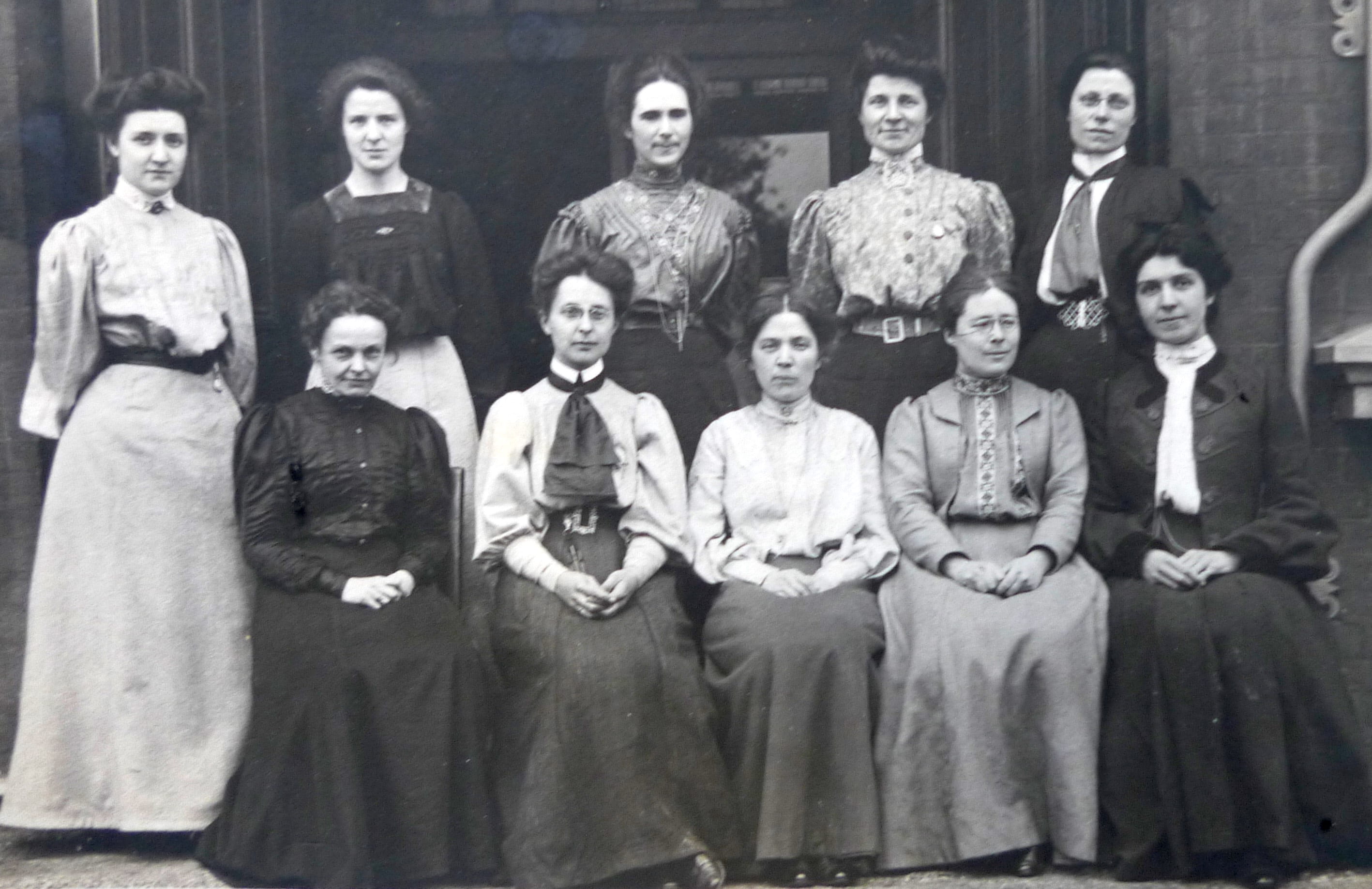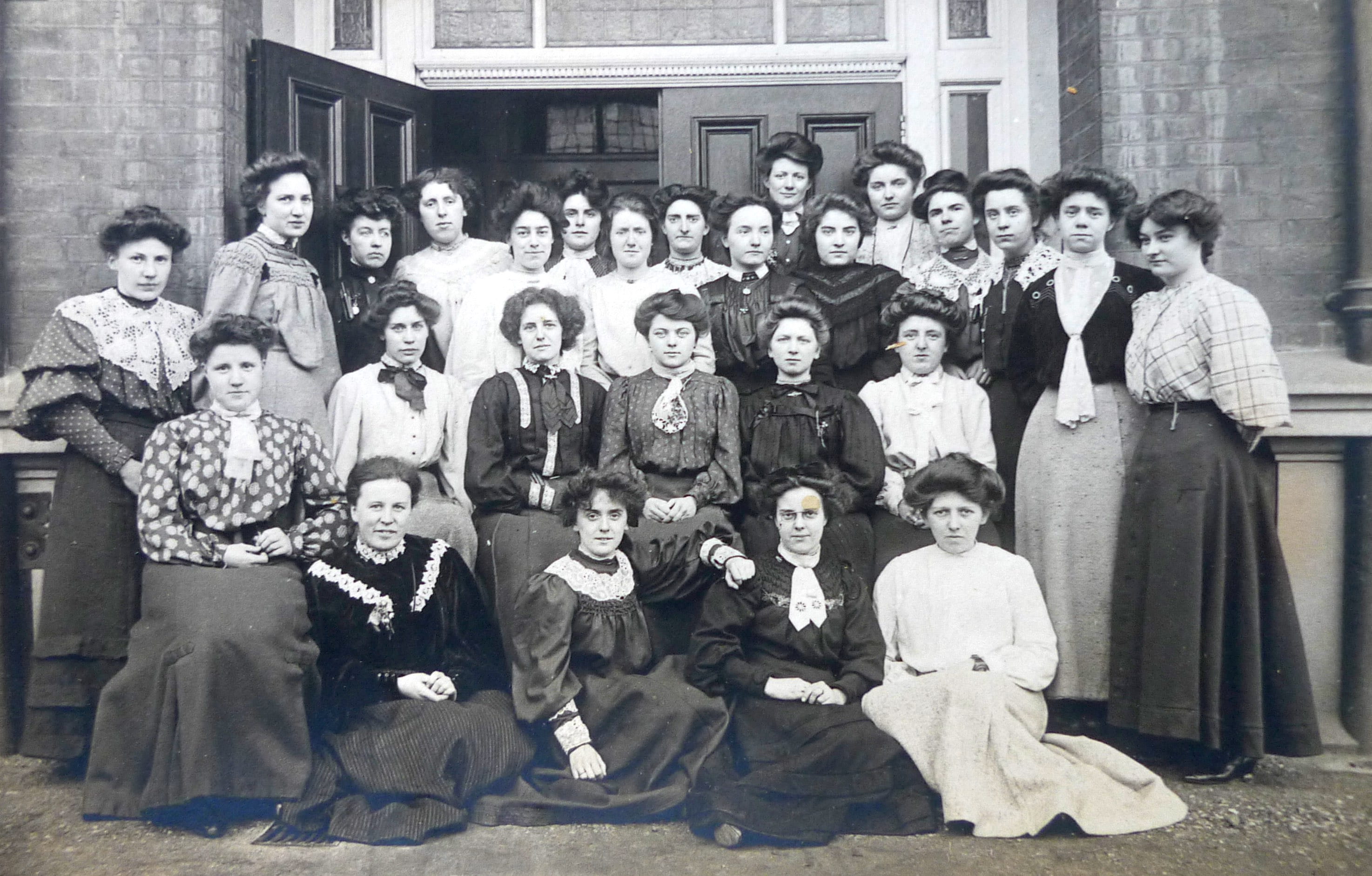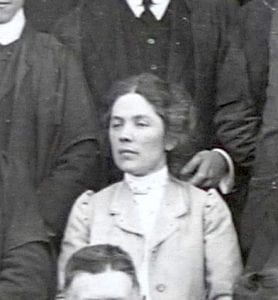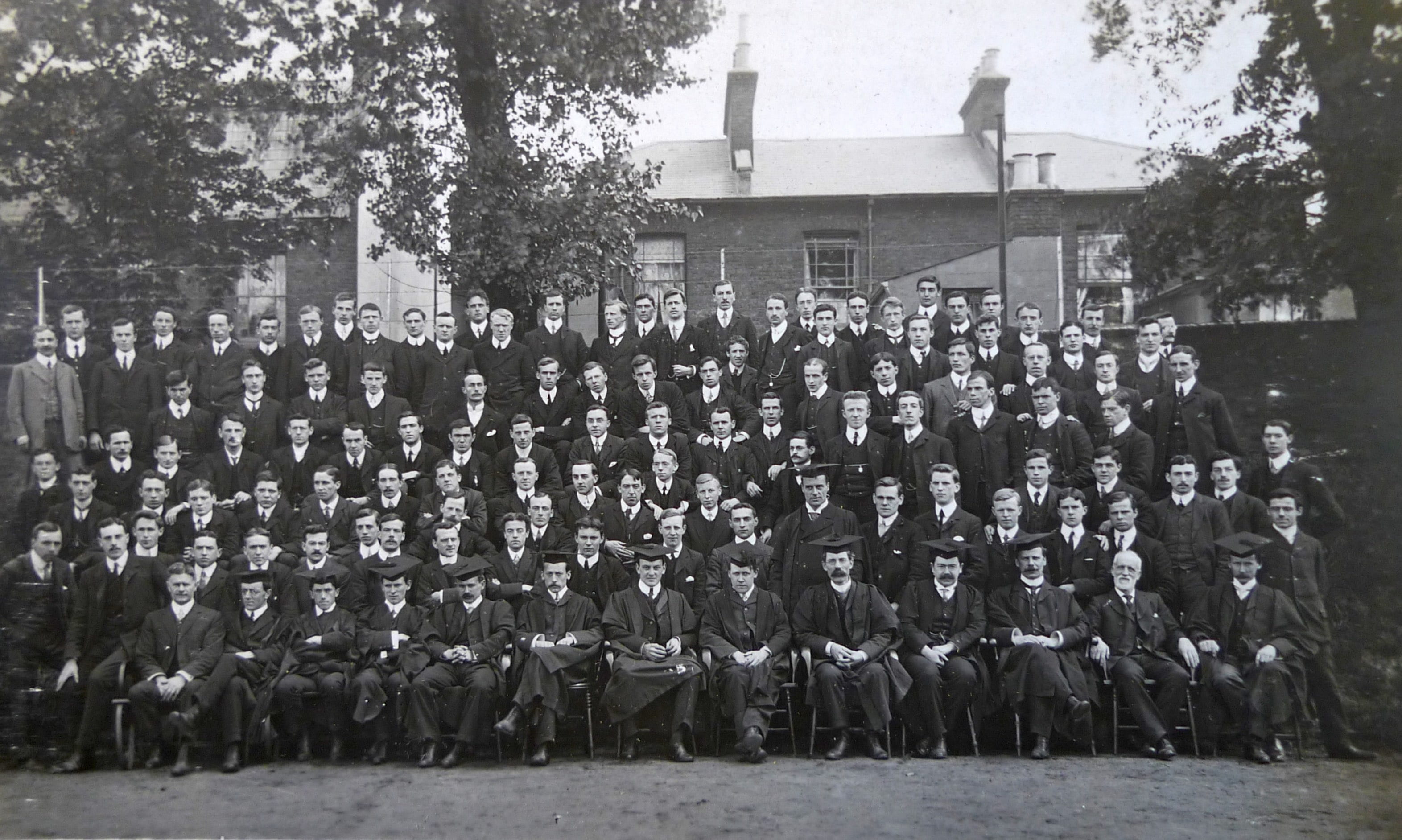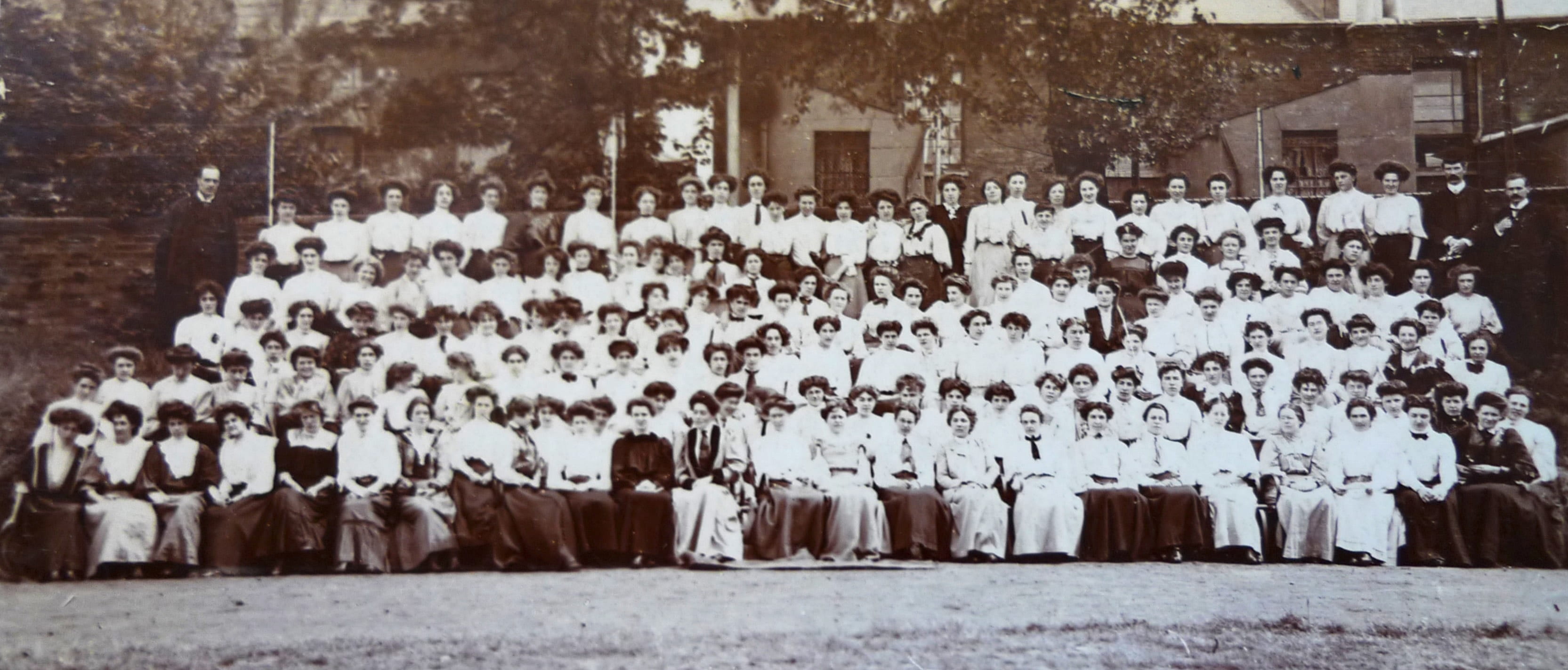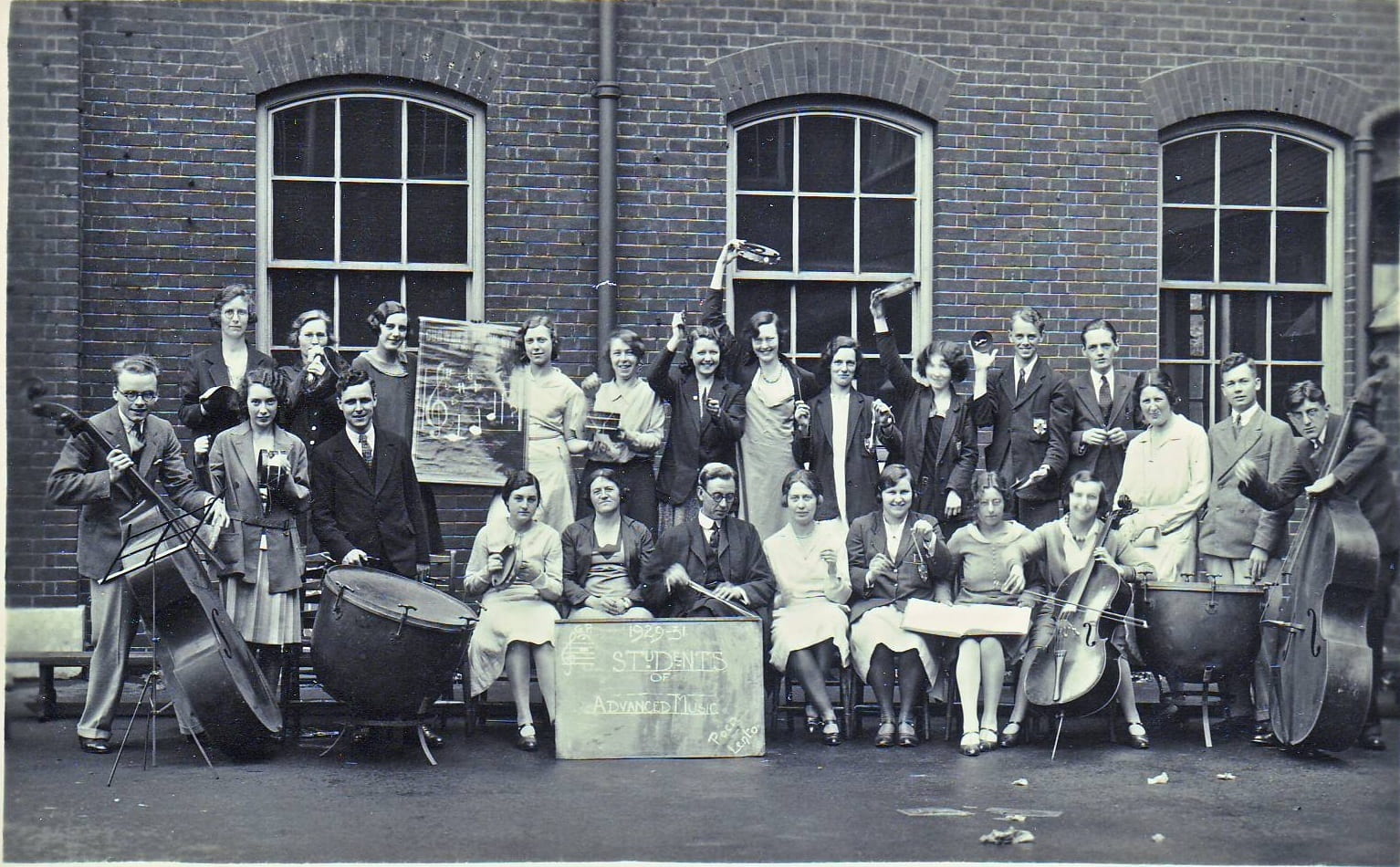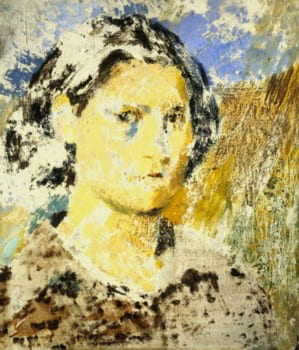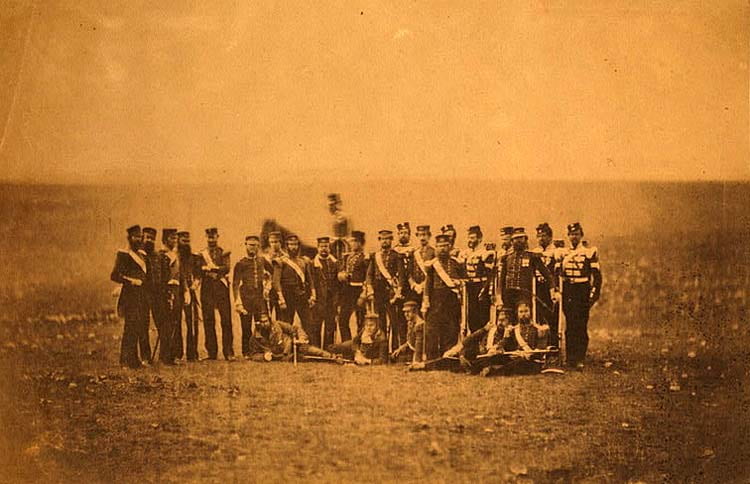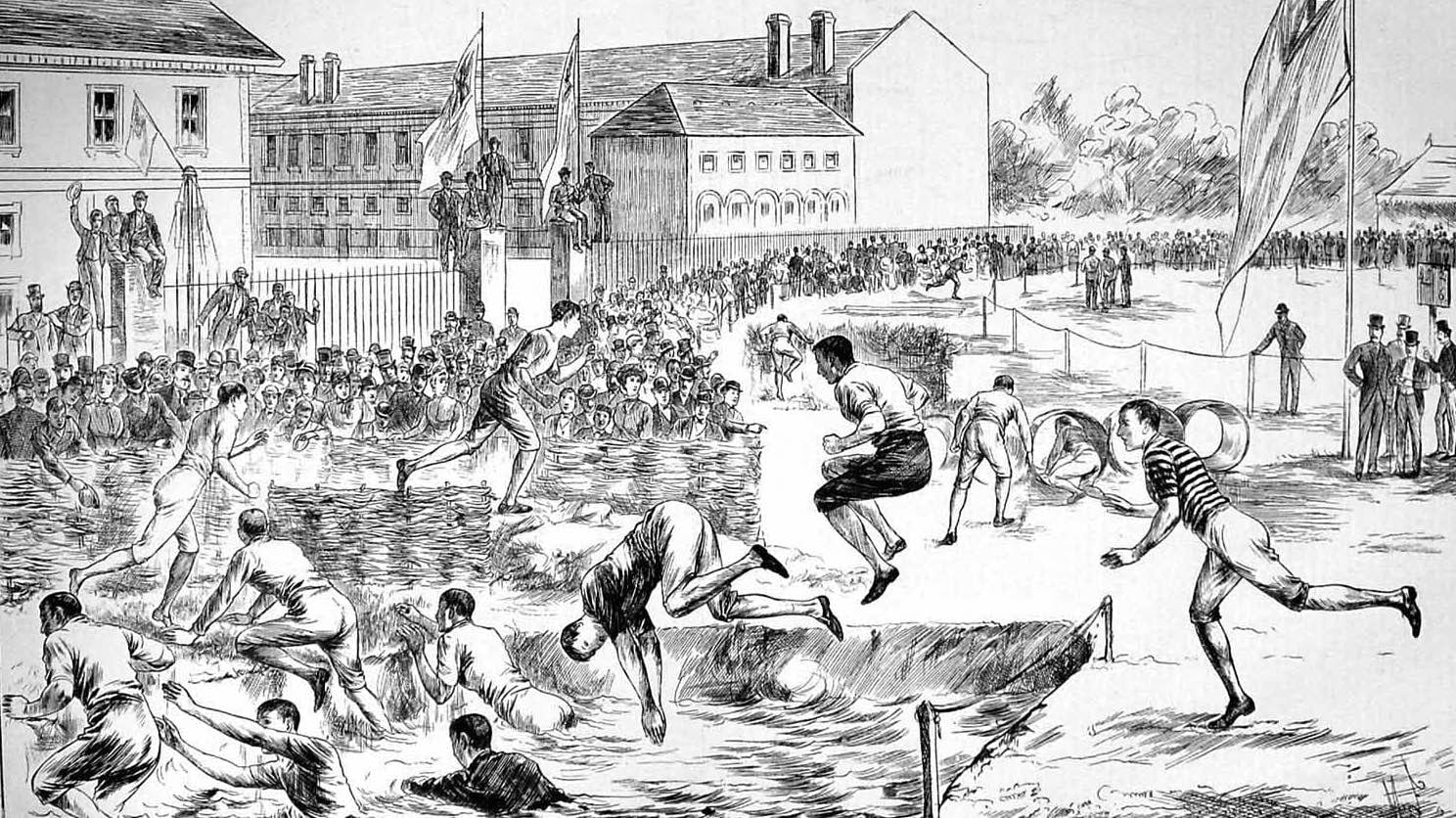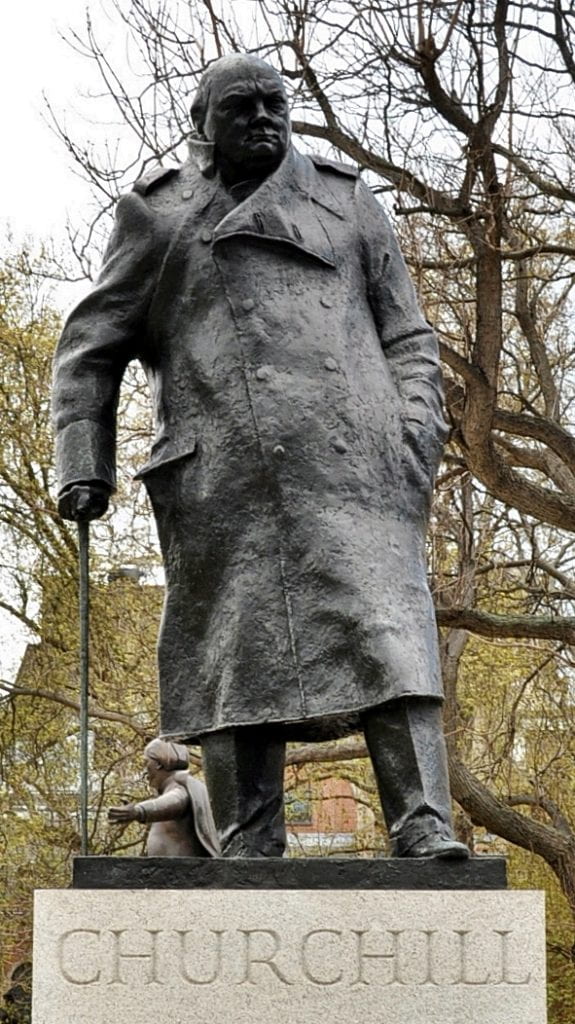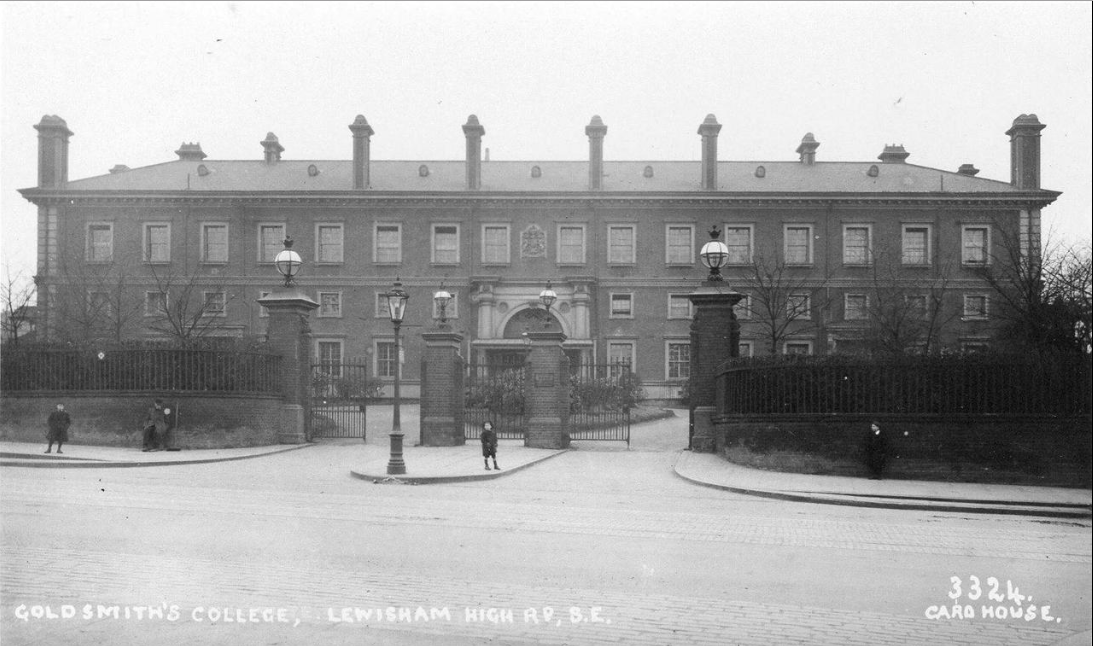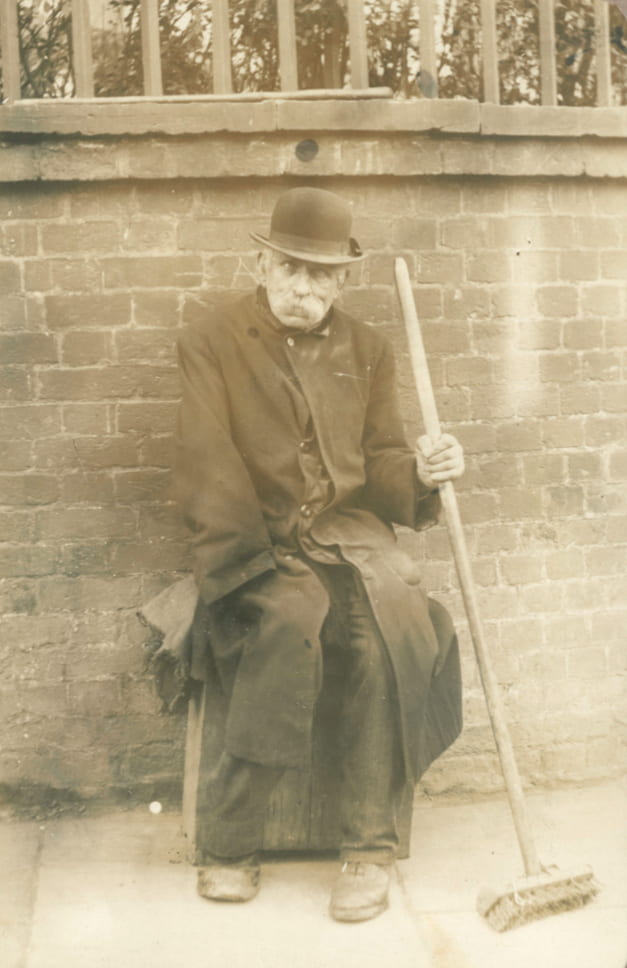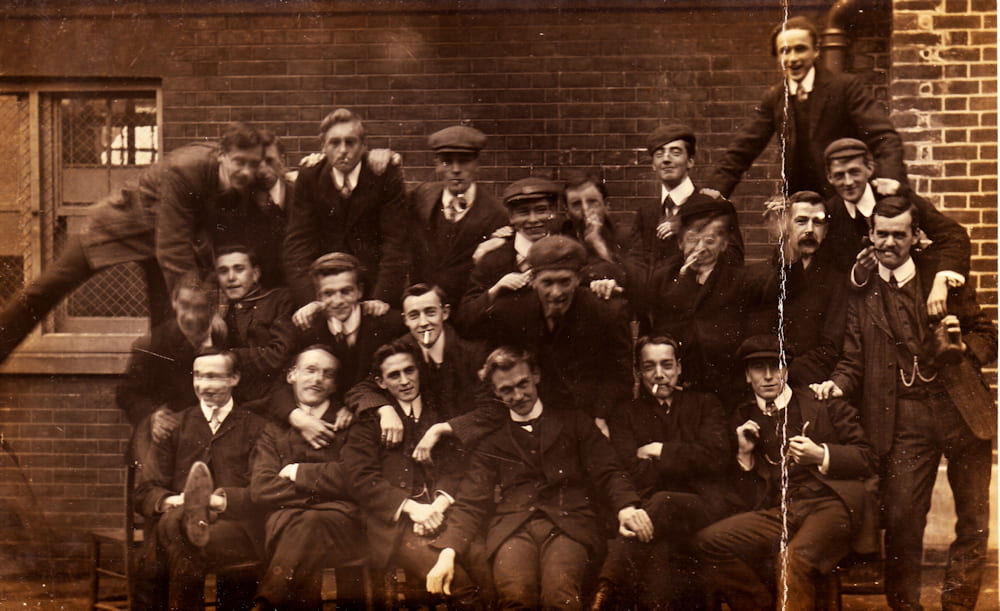
These male seniors of 1908 were labelled ‘The Not Innocents.’ We have no information about why they earned this nickname. Image: Goldsmiths College archives.
Is there a spirit connected with being a Goldsmiths’ student that is somewhat distinctive, radical, questioning, and protesting?
Beyond any desire to ‘brand’ and make distinctive something about Goldsmiths, it is a question with no easy answer.
It might be foolish to generalise. In the photograph above these are men behaving badly for a brief moment: sticking their tongues out, pulling rude faces, making somewhat impolite gestures with their hands, and in one case smoking a cigarette and pipe at the same time.
But there are events and evidence of a tradition that could suggest something.
The Warden, Ross Chesterman (1953-74) recalled deciding to ring up the Commissioner of the Metropolitan Police, Sir Robert Mark, in the late 1960s when some of ‘our students occasionally got into mild trouble with the police, usually because of demonstrations.’
Mark had a fearsome reputation. The local police commander was certainly in fear of him: ‘When the Commissioner Mr Mark says jump, you don’t think about it or argue, you bloody well jump!’
